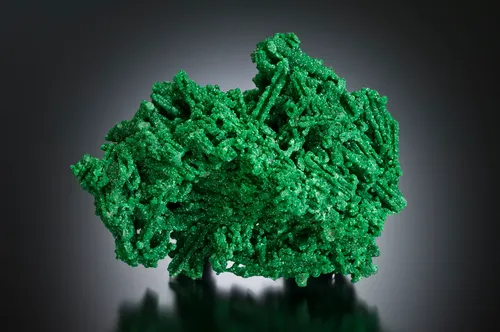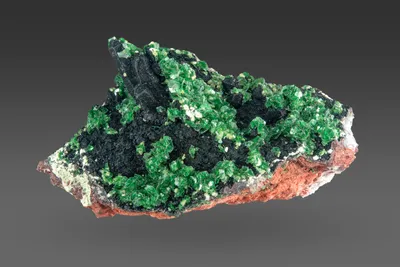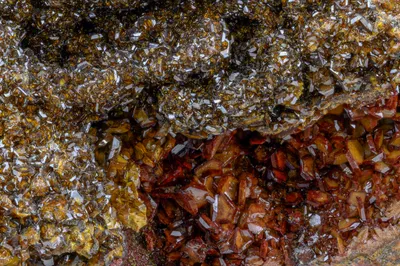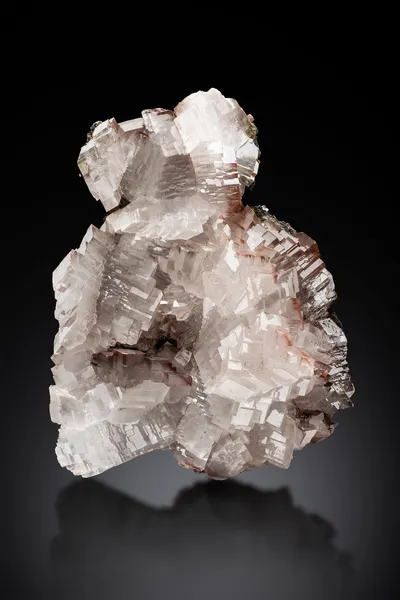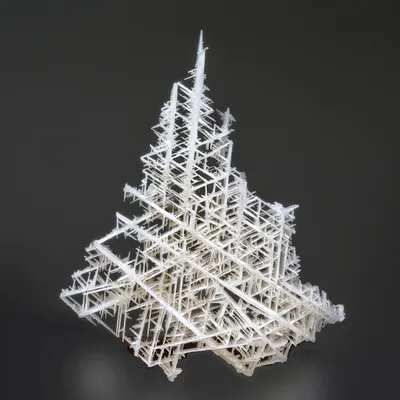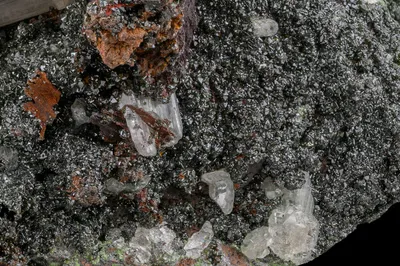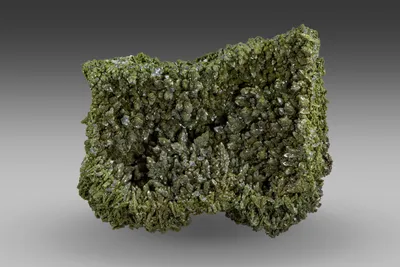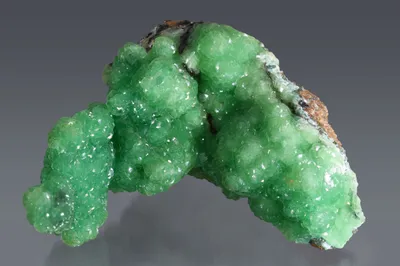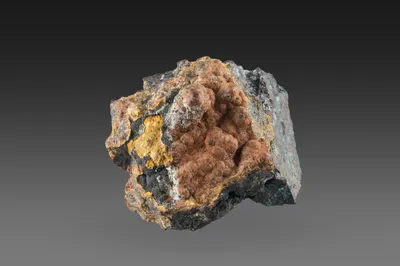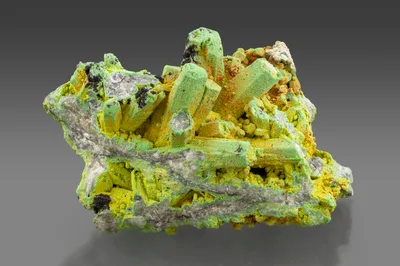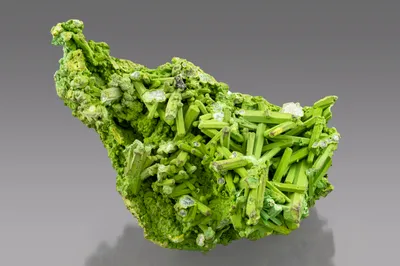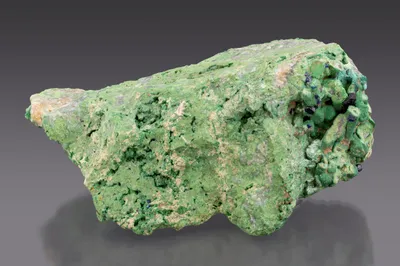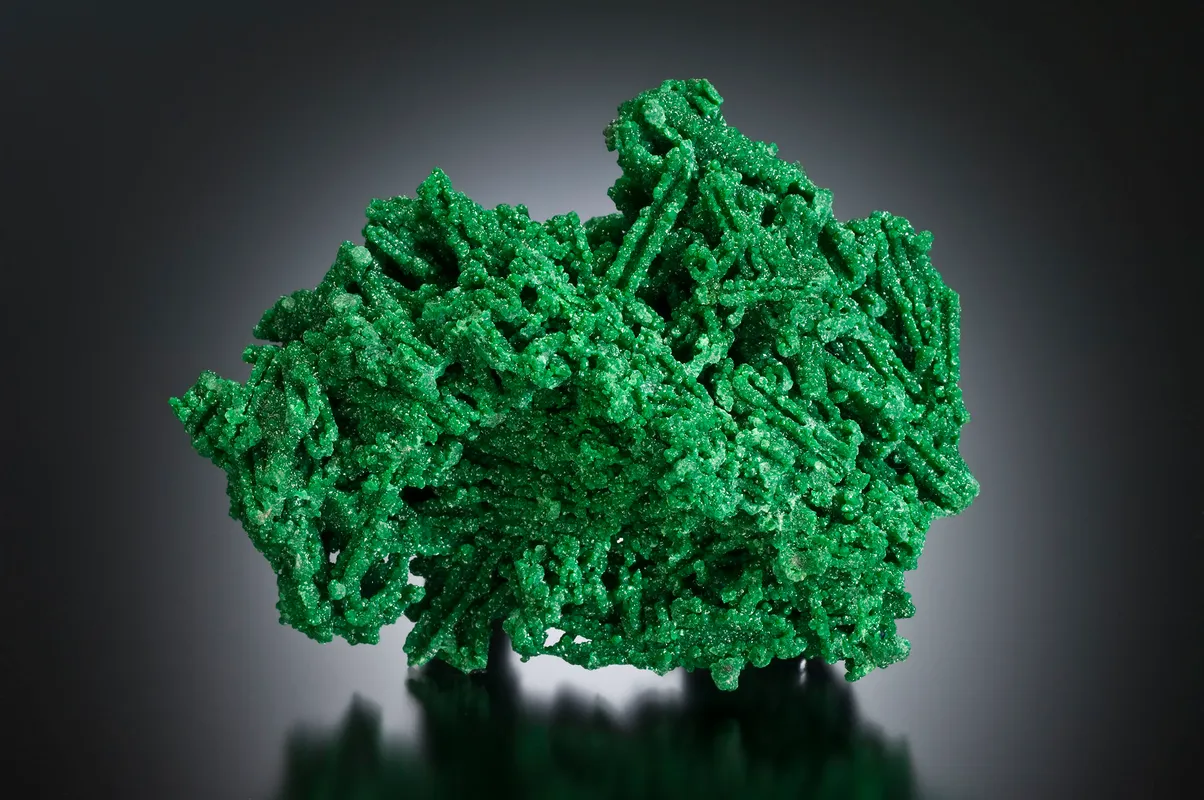
Image Credit: Jeff Scovil
Mineral Species
Arsentsumebite
Type Locality
Yes
Composition
Pb2Cu(AsO4)(SO4)(OH)
Crystal System
Monoclinic
Status at Tsumeb
Confirmed (type locality)
Abundance
Common
Distribution
First, second and third (?) oxidation zones
Paragenesis
Supergene
Entry Number
Species; TSNB30
Type Mineralogy
The name ‘arsentsumébite’ [sic] was coined by Vésignié (1935) to describe what he believed to be a new mineral but, although he chanced on essentially the correct formula, it later transpired that he had been working with a mixture of bayldonite and duftite (Guillemin 1956). Nevertheless, the IMA lists arsentsumebite as "grandfathered" from 1935 notwithstanding that Bideaux et al. (1966) provided a modern, though superficial, characterisation of arsentsumebite as a valid mineral species in its own right (http://cnmnc.units.it/; accessed January 2023). The mineral is the arsenate analogue of tsumebite and is named for this relationship. The type specimen of Bideaux et al. (1966), which Bideaux believed to be from the second oxidation zone, is conserved at Harvard University (catalogue number MGMH 134586).
General Notes
Arsentsumebite is the arsenate analogue of tsumebite, with which it has often been confused. Arsentsumebite occurs in considerable abundance throughout much of the first oxidation zone. However, the type material on which the modern description is based (Bideaux et al. 1966) is possibly from the second oxidation zone (see below).
In the first oxidation zone arsentsumebite is commonly a component of massive earthy mixtures of copper arsenates and, somewhat less commonly, as crusts of small, platy crystals, typically < 1 mm, spearmint-green in colour and often twinned.
Arsentsumebite forms spectacular pseudomorphs after mimetite in the upper levels of the mine. Most such specimens were originally considered to be bayldonite after mimetite, but many examples appear to be mimetite replaced (or encrusted) by either arsentsumebite, or mixtures of arsentsumebite and bayldonite. Specimens and records from the Wilhelm Klein Collection (at Harvard University) indicate that these pseudomorphs were particularly common from the surface down to 5 Level (Southwood et al. 2018).
In 1989 fine specimens of azurite on arsentsumebite were recovered during pillar-robbing operations on 6 Level (Von Bezing et al. 2014; Southwood 2022b). Many azurites from the famous "Easter Pocket", recovered from 8 Level in 1994, are associated with arsentsumebite.
The modern type assemblage (Bideaux et al. 1966) consists of a crust of distorted crystals of arsentsumebite, on malachite, associated with iron oxides, wulfenite, cerussite and quartz. Notwithstanding its abundance in the first oxidation zone, there is circumstantial evidence that the type material described by Bideaux et al. (1966) came from the deeper levels of the mine. A hand-written note by Dr Carl Francis, accompanying the holotype specimen at Harvard (MGMH 134586) notes that it is from "…the first batch of second oxide zone minerals to come to the USA."
Keller (1977a) placed arsentsumebite in one of his Type II parageneses (i.e., forming under relatively low pH conditions):
II/2: primary sulphide >> scorodite >> arsentsumebite >> anglesite >> brochantite >> cerussite (ps. after anglesite).
Keller (1984) noted that while arsentsumebite occurs in association with beudantite, it does not appear to co-exist with carminite.
Associated Minerals
anglesite; arseniosiderite; azurite; bayldonite; beudantite; brochantite; calcite; cerussite; chenevixite; clinoclase; conichalcite; corkite; duftite; dundasite; gartrellite; hinsdalite (?); hydrocerussite; kasolite; langite; linarite; malachite; mimetite; mottramite; perroudite; phosgenite; posnjakite; quartz; scorodite; segnitite; smithsonite; tennantite-(Zn); tsumcorite; wulfenite
Pseudomorphs
Arsentsumebite has been reported to form pseudomorphs after the following minerals: azurite (rare); cerussite (rare); mimetite (common); schultenite (rare); tennantite (rare).
